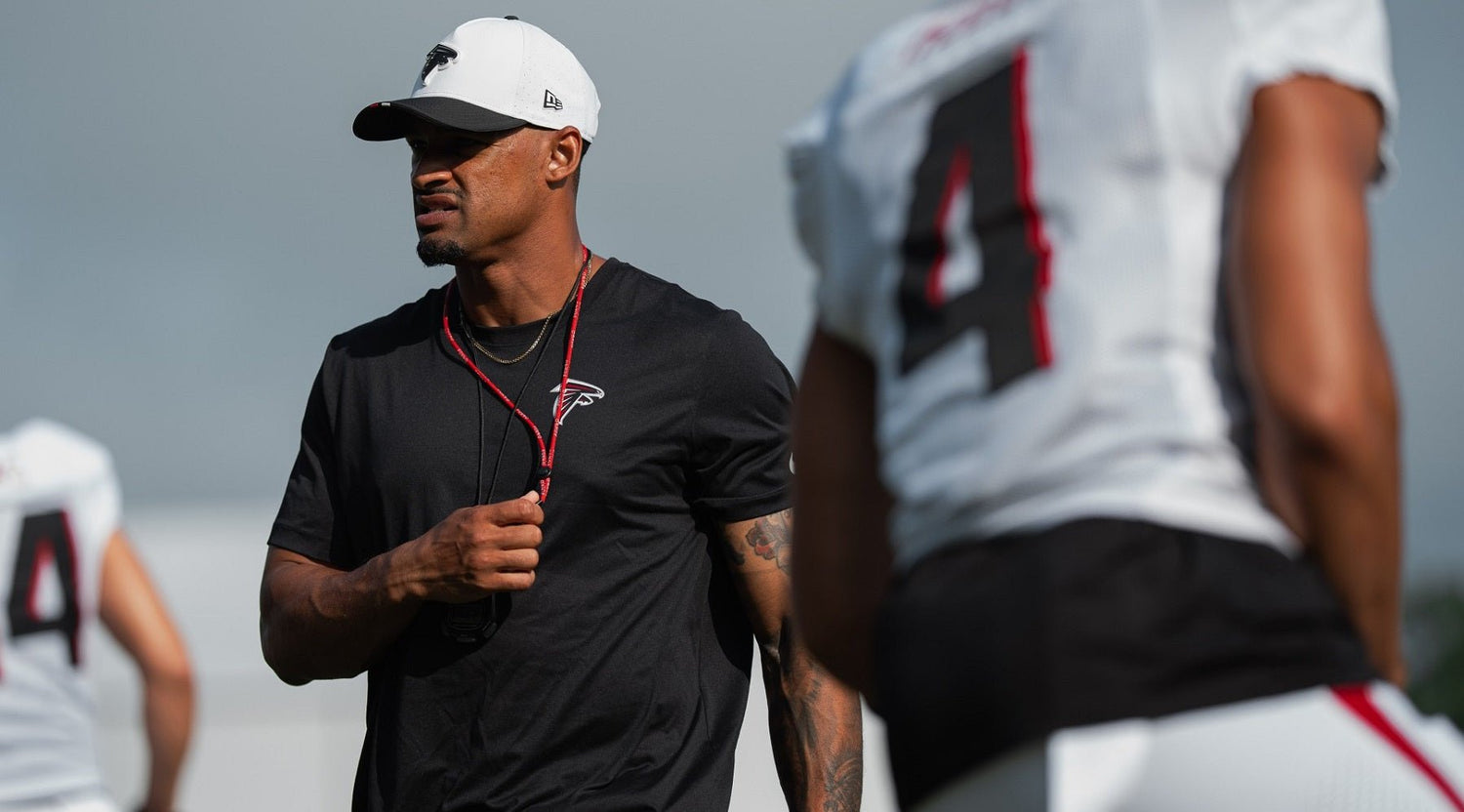At the very top of elite sport, the smallest margins make the biggest difference. For John Griffin, Director of Player Performance at the Atlanta Falcons, success in the NFL is about far more than getting stronger or faster. It is about execution, attention to detail, and finding the right tools to keep players healthy and performing week after week.
Griffin has spent over a decade in strength and conditioning, working across college and professional football before joining the Falcons. Now in his second season in Atlanta, he is responsible for a performance programme that supports some of the world’s most powerful athletes through one of the most demanding schedules in sport.
Managing the demands of camp and season
During training camp, the Falcons roster swells to 90 players before being cut to 53. Within that number, Griffin explains, there are effectively three groups to manage: established roster players, bubble players fighting for selection, and younger athletes gaining experience and film. Each requires a different training model.
“Those at the bottom of the roster are practising and playing in full games every week, so their programme looks more like an in-season model,” he says. “Meanwhile, guys who are safe on the roster can be trained more aggressively during the week because they are not playing as many minutes in preseason.”
This balancing act continues into the season itself. The goal is not simply to keep players fit, but to ensure they are ready to perform when it matters most.

Collegiate vs professional athletes
Griffin has seen firsthand how the mindset shifts between college and the NFL. “Once you become a pro, your body is your money,” he explains. “The way guys take care of themselves, invest in their recovery and preparation, it’s like an investment strategy. They learn quickly that if they do not, they won’t last.”
The way guys take care of themselves, invest in their recovery and preparation, it’s like an investment strategy.
The stakes are higher at the professional level, not only for the players but for the coaches’ making decisions around training and recovery. With athletes worth millions of dollars a season, every call carries weight. “To you it might be a training template, but to the organisation it is a $25 million decision,” Griffin says. “That makes evidence-based practice and execution absolutely vital.”
Building a framework for recovery
One of Griffin’s priorities has been establishing clear frameworks around recovery. The Falcons’ performance department brings together strength and conditioning, return to play, physical therapy, dietetics, and sports science in a collaborative model. Together, they have built a recovery matrix that guides players on the best modalities for different situations: after a game, in between training days, or in short turnaround windows.
This structured approach gives athletes autonomy while ensuring consistency across the squad. As Griffin puts it, “We try to be as pre-emptive as possible. We want to bake recovery into our schedules, create the right waves through the season, and then focus on the five to ten players who might need extra support. If you’re making wholesale changes mid-season, the system is already broken.”
The role of BFR
Blood Flow Restriction has been part of Griffin’s toolkit for several years, initially used in one-to-one settings. The challenge was scaling it across an entire roster. That changed when he was introduced to Hytro.
“We loved the research and the feedback from athletes, but with the old Delphi units it just was not possible to deploy at scale,” he recalls. “When Hytro came along, it solved the problem. Suddenly we could roll it out to 50 or 90 players at once.”
When Hytro came along, it solved the problem. Suddenly we could roll it out to 50 or 90 players at once.
The Falcons introduced BFR in stages, first trialling it with staff and a small group of players, before rolling it out across game day plus one sessions. Players now use it after games to accelerate recovery, with plans to integrate it further into training.
For Griffin, ease of use is critical. “Simplicity is number one,” he says. “If it’s too complex, it won’t stick. Hytro fit straight into our existing framework, and that has been key to adoption.”
If it’s too complex, it won’t stick. Hytro fit straight into our existing framework, and that has been key to adoption.

Beyond technology: the fundamentals
Despite his openness to innovation, Griffin is clear on what really matters. “For us the non-negotiables are fuelling windows and sleep,” he says. “Those are the biggest needle movers. If you miss on those, nothing else matters.”
Nutrition is particularly challenging in the NFL, where appetite can fluctuate with the mental and physical stress of the season. The Falcons prioritise multiple fuelling opportunities throughout the day to ensure players arrive on the field with the right energy levels.
Dr. Warren Bradley, Hytro’s founder, points to emerging research showing how BFR can even support nutrient absorption post-training, adding a new layer to how recovery and fuelling might be optimised.
Culture and execution
Asked what sets the Falcons’ environment apart, Griffin points to culture. “It’s synergy,” he says. “Clear roles and responsibilities, shared ownership, and a staff that all bring something to the table.”
He also highlights adaptability as the hallmark of great coaching. “A good coach might have a framework or a couple of tools they’re really good at. A great coach can adapt to the person in front of them, coach five different people five different ways. That flexibility is what makes the difference.”
We can design the best templates in the world, but if we don’t execute at a high level, it means nothing. Execution is the secret sauce.
For Griffin, that adaptability has one foundation: execution. “We can design the best templates in the world, but if we don’t execute at a high level, it means nothing,” he says. “Execution is the secret sauce.”
Ready to scale BFR across your full roster? Get in touch to discuss your requirements with our team.






Leave a comment
This site is protected by hCaptcha and the hCaptcha Privacy Policy and Terms of Service apply.